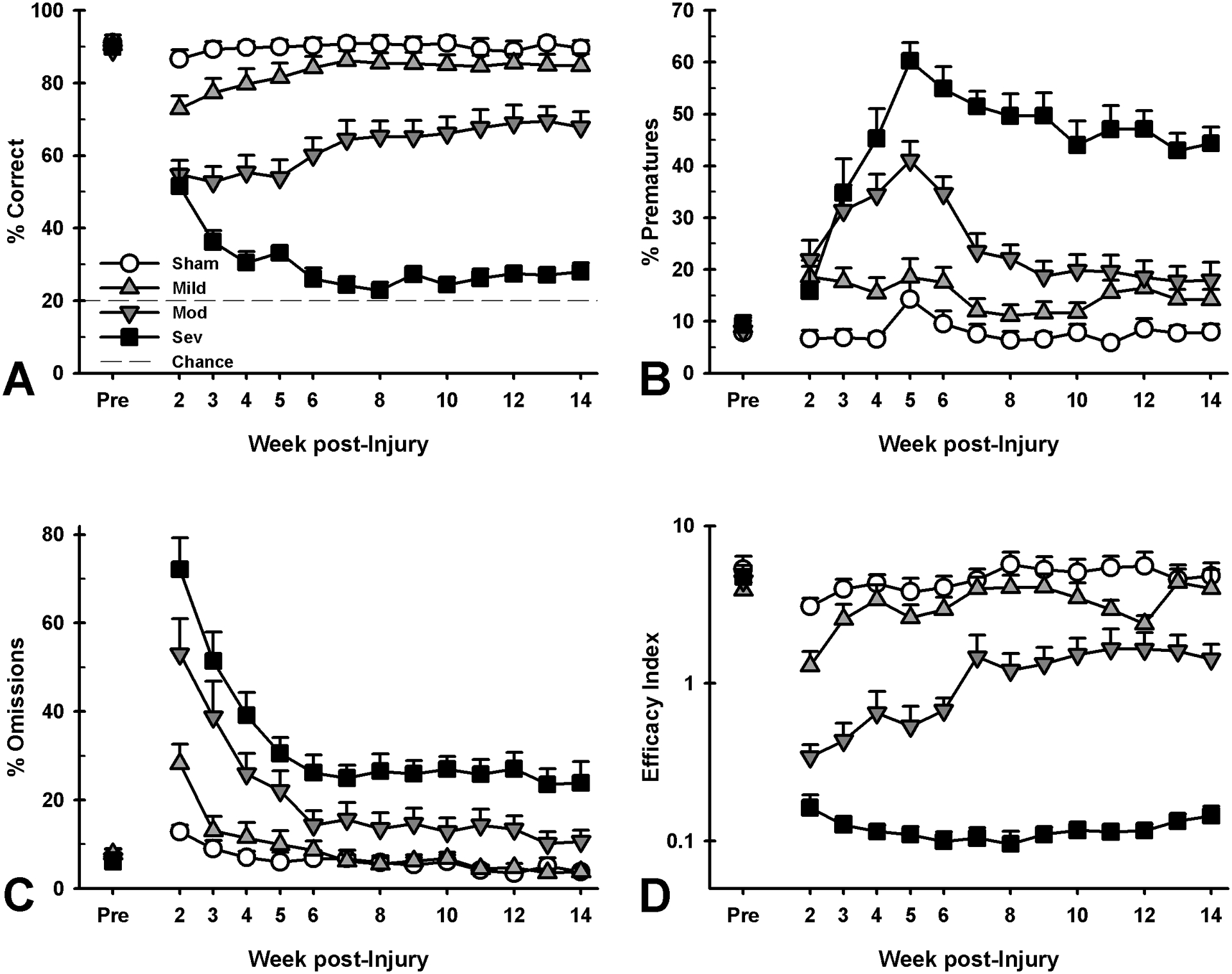Figure 2.

Effects of injury on 5CSRT performance at acute (week 2–5) and chronic (week 5–14) time points. Deficits in all domains were tiered by injury severity. A) Mild-injured rats demonstrated significant acute deficits in attention (p = 0.004) which recovered over time (p = 0.189), while moderate- and severe-injured rats had significant acute (p < 0.001; p < 0.001) and continuing chronic deficits (p < 0.001; p < 0.001). B) Mild-, moderate- and severe-injured rats showed increased impulsive responding in the acute period (p = 0.001; p < 0.001; p < 0.001), which remained elevated throughout chronic testing (p = 0.052; p < 0.001; p < 0.001). C) Mild-injured rats had no significant change in omitted trials (p = 0.192; p = 0.899), yet moderate- and severe-injured rats showed increased omissions at both the acute (p < 0.001; p < 0.001) and chronic (p < 0.040; p < 0.001) time points. D) Mild-injured animals were initially impaired in overall task efficacy (p = 0.001), but recovered during chronic testing (p = 0.115), while moderate- and severe-injured animals demonstrated initial deficits (p < 0.001; p < 0.001) lasting into the chronic period (p < 0.001; p < 0.001). Data shown are mean + SEM.
